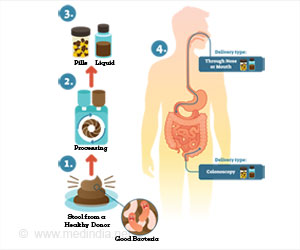At the IOF World Congress on Osteoporosis, Toronto, cigarette smoking was found to weaken the bones and increases fracture rate - new research reports.
At the IOF World Congress on Osteoporosis, Toronto, cigarette smoking was found to weaken the bones and increases fracture rate - new research reports.
Smoking has long been known to increase the risk for osteoporosis in women, but the new studies, two conducted in Sweden and one in China, find that smoking also hastens the erosion of men's bones. In addition, the Chinese study demonstrates, for the first time, that even second-hand smoke can significantly increase the risk for osteoporosis and fractures in both men and women.Bad News from GOOD Study
The deleterious effects of smoking can readily be detected in young bones. That's one conclusion from the Gothenburg Osteoporosis and osteoporosis(GOOD) study, which has been following the health of young Swedish men (see conference Abstract No. OC31).
‘Though smoking has previously been linked to low bone density in the elderly population, its effects on adolescents has remained controversial. Now, we clearly demonstrate that young smokers also have significant losses in bone density,’ said Mattias Lorentzon, lead author on the study.
Lorentzon, working with Prof. Claes Ohlsson and colleagues at the Center for Bone Research at the Sahlgrenska Academy, Gothenburg University, measured bone mineral density--a measure of bone strength--in over 1,000 Swedish men between 18 and 20 years old. They found that in smokers, bone density in the spine, hip, and body as a whole, was lower than in their non-smoking peers. The most significant effects were in the hip, where the mineral density was over 5% lower than in non-smokers--typically, a 10% loss of bone mineral density doubles the risk of fracture.
Their results explain why previous findings have been equivocal. In this case the researchers used a sophisticated computer assisted X-ray machine (CAT scanner) to get three-dimensional images of bone. These 3D images showed that smoking primarily affects a specific type of bone called cortical bone. This very dense bone forms a layer, similar to the enamel on teeth, around softer, spongy bone. Lorentzon and colleagues found that smoking reduces the thickness of cortical bone. The findings indicate that smoking may significantly affect bone strength. ‘If you think of bone as a pencil, then the thicker the pencil the harder it will be to break,’ said Lorentzon.
Advertisement
In a separate study, Center for Bone Research colleagues Dan Mellström and co-workers have been measuring how a variety of lifestyle and biological factors influence the likelihood of bone fracture in elderly men (see conference Abstract No. P117). Mr. OS, as it is called, is being conducted internationally. Mellström and colleagues have recruited over 3,000 elderly men for the Swedish part of the study and correlated smoking history with bone density measurements and fracture incidence. ‘We find that in elderly men a history of smoking is associated with weak bones and almost a twofold increase in vertebral fracture incidence,’ said Mellström, who presented the data this week in Toronto. Vertebral fractures are a major sign of osteoporosis and a strong predictor of future fractures.
Advertisement
Second-Hand Smoke, First-Hand Problem
In the first ever analysis of the effects of second-hand smoke on bone density, researchers in the U.S. have found that Chinese men and pre-menopausal women have significantly lower bone density if they are exposed to second-hand smoke, even if they are themselves smokers (see conference Abstract No. P114).
Yu-Hsiang Hsu and colleagues from the Harvard School of Public Health measured hip bone mineral density in over 14,000 men and women in rural China--hip fractures are a major cause of morbidity and mortality worldwide. They also used recorded non-spine fractures and smoking history.
When they correlated smoking with osteoporosis and fracture history, they found that the largest effects were seen in pre-menopausal, non-smoking women--only 6% of women in the study were smokers, versus 87% of men. ‘Compared to non-smokers that are not exposed to second-hand smoke, premenopausal women exposed to second-hand smoke have a threefold higher risk of having osteoporosis and a 2.6 times greater risk for a non-spine fracture,’ said Hsu. Though smoking itself is a risk factor for osteoporosis, Hsu and colleagues also deduced that smokers were at increased risk if they were also exposed to smoke from other family members on a daily basis.
Though this is the first reported study of the effects of second-hand smoke on bone health, previous studies have reported that second-hand smoke may alter levels of estrogen, which is a key hormone for bone health in both women and men, Hsu explained. ‘Our finding is consistent with this hypothesis,’ said Hsu, who now plans a follow up study to correlate serum levels of cotinine, a nicotine derivative that only appears in blood of those exposed to tobacco smoke, with serum hormone levels.
(Source: Eurekalert)











